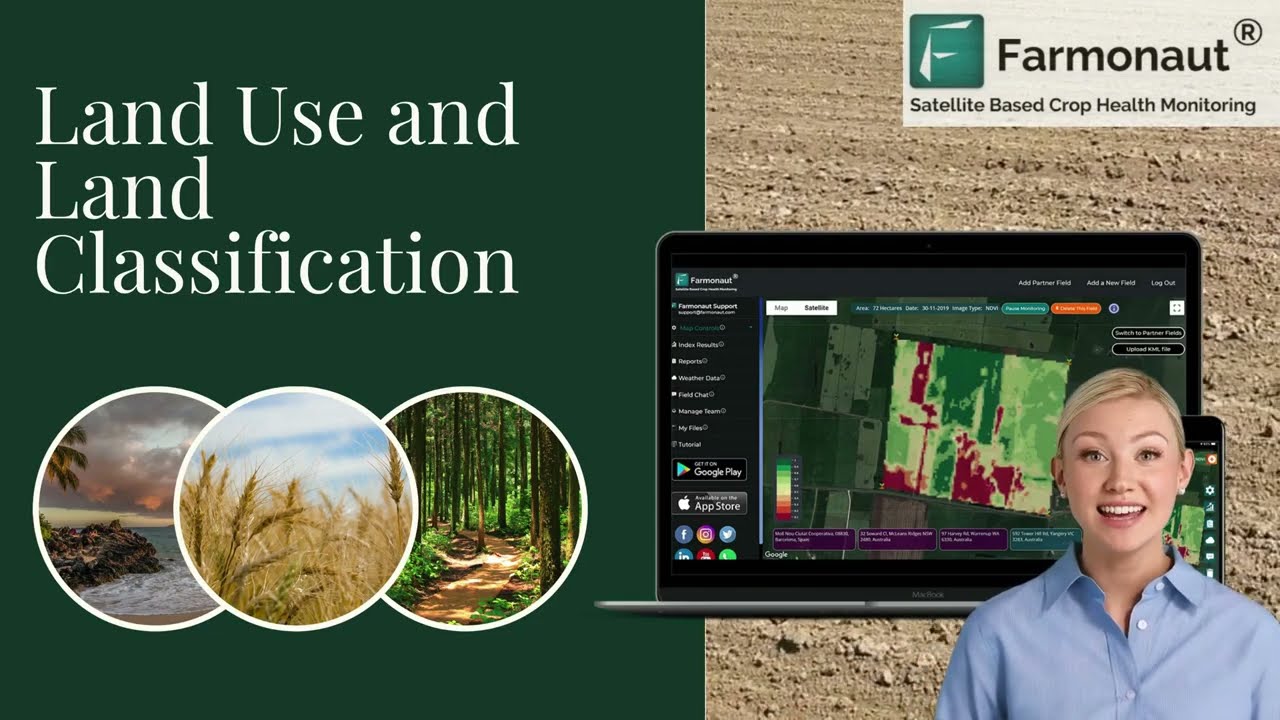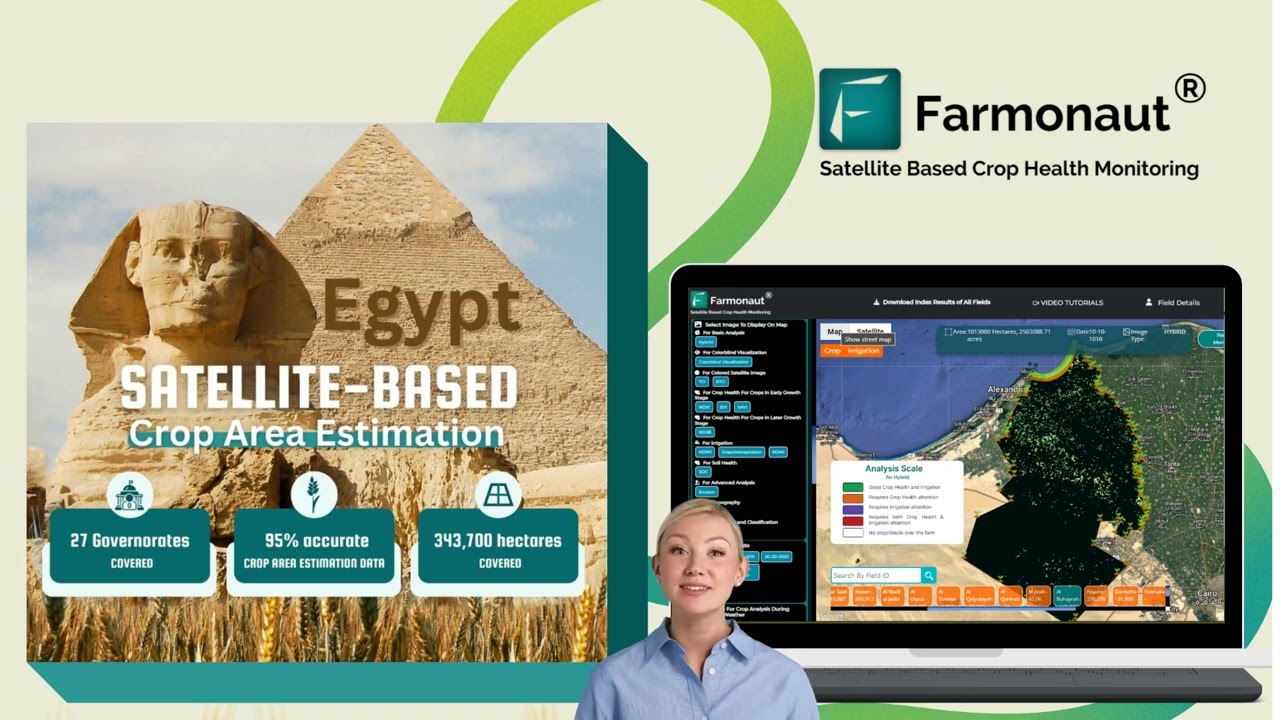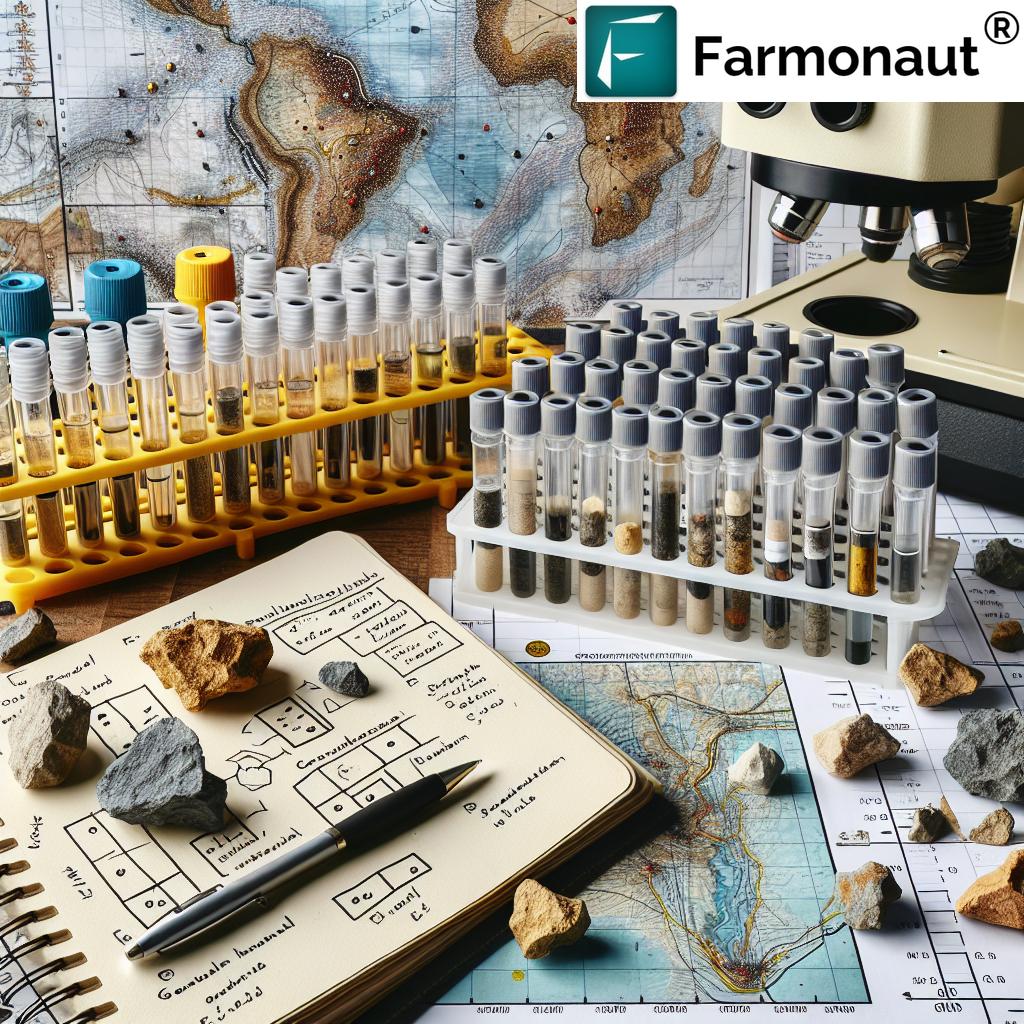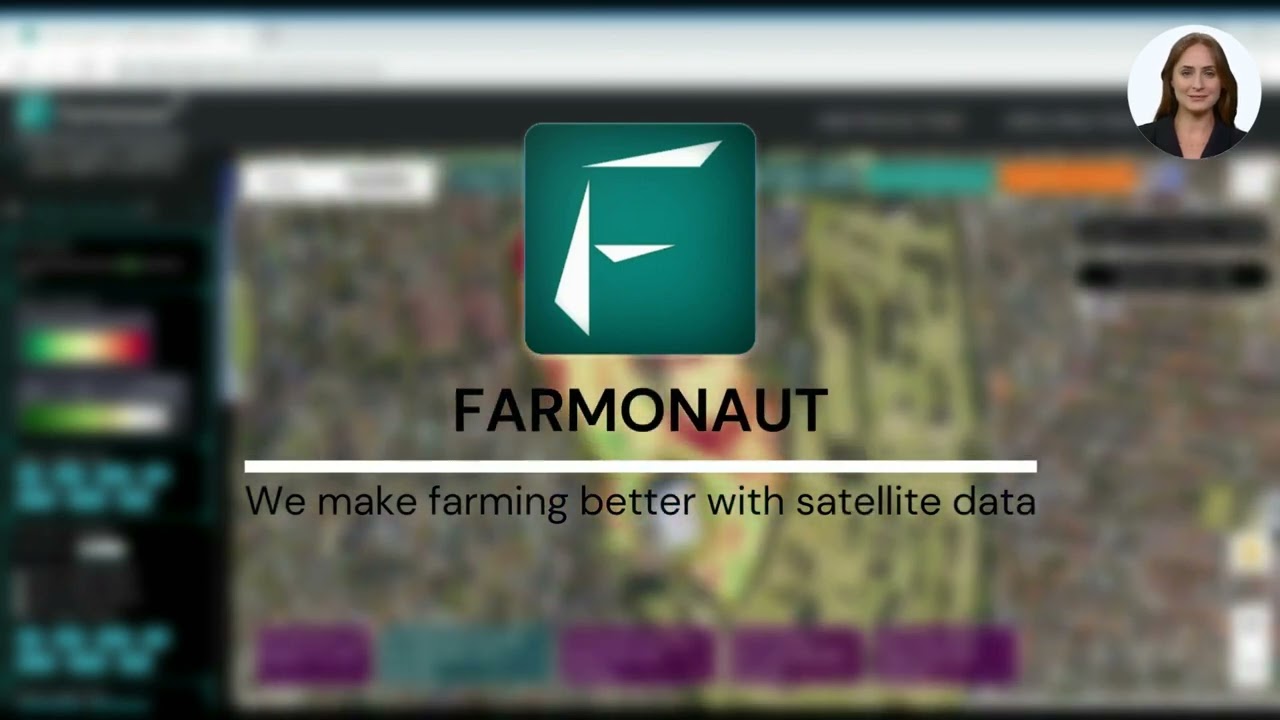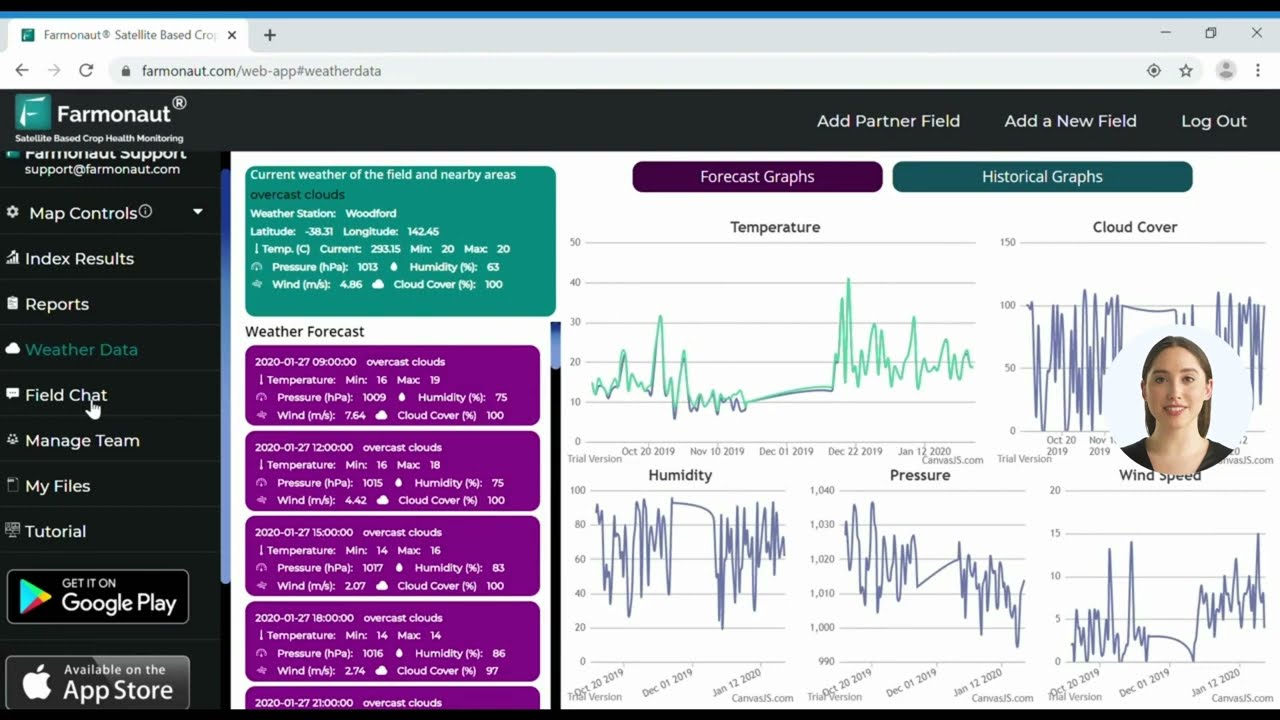Top 5 Soil Sampling Trends in Papua New Guinea Gold Exploration
“Over 70% of gold exploration projects in Papua New Guinea now utilize advanced geochemical soil sampling for drill targeting.”
Table of Contents
- Introduction
- Trend 1: Portable XRF Use in Soil Sampling
- Trend 2: Multi-Element Analysis in Gold Exploration Projects
- Trend 3: Deep-Soil Sampling and Its Impact on Drill Targeting
- Trend 4: Remote Sensing and Satellite Integration
- Trend 5: Advanced Geostatistical Modeling for Mineralized Area Mapping
- Comparative Trends Table
- Surface Geochemistry Targeting and Drill Targeting in Papua New Guinea
- Precision Technologies for Modern Mining: Farmonaut’s Offering
- Frequently Asked Questions (FAQ)
- Conclusion
Introduction: Transforming Gold Discovery Through Soil Sampling in Papua New Guinea
Papua New Guinea (PNG) stands as one of the world’s foremost frontiers in gold exploration projects. The region’s complex geology, characterized by extensive mineralized areas, significant mineralization patterns, and ongoing discoveries, makes it a hotspot for the industry. Recent years have witnessed a seismic shift in exploration methodologies—above all, in soil sampling in mineral exploration. Driven by technology, innovative geochemical indicators for discovery, and advanced mapping, these trends now define competitive advantage across surface, stream, and subsurface programs.
With the latest work at South Pacific Metals Corp.’s (SPMC) Anga Project—adjacent to major producers like K92 Mining—soils, rock samples, and stream sediment sampling methods are now integral. Stakeholders in the region, ranging from company geologists to international investors, are increasingly interested in efficient drill targeting and real-data analytics, all while operating within one of Kainantu Gold District‘s most prospective landscapes.
In what follows, we outline the Top 5 Soil Sampling Trends in Papua New Guinea Gold Exploration. We frame each trend within the context of area-specific practices (notably Irinke Prospect, Binano North, and Golkona South), technical advances, and the broader implications for exploration success. Discover how surface geochemistry targeting, new sampling protocols, and digital platforms (including Farmonaut’s advanced solutions) are driving a new era of discovery and operational excellence in PNG.
Key Focus Keywords in This Article: soil, sampling, area, work, prospect, rock, surface, results, projects, mining, south, exploration, system, target, significant, sediment, areas, approximately, laboratory, across, targets, stream, indicators, discovery, east, structural, mineral, drill, district, collected, geoanalytics, geochemical, mineralized, identified, mapping, anomalous, elements, determined, anomaly, sample, northeast, drilling, technical, river, programs, underway, identifying, several, prospects, geologist, study, mineralization, operations, analyses, region, closely, spaced, extensions, north, intrusive, pathfinder, alluvial, large, vein, indicating, within, potential, exchange.
Trend 1: Portable XRF Use in Soil Sampling for Gold Exploration in Papua New Guinea
Over the past decade, portable X-ray fluorescence (XRF) analyzers have moved from novelty to necessity in gold exploration projects throughout PNG. Here’s why our industry now prioritizes their use across all major campaigns:
- Immediate, In-Field Results: XRF devices allow geologists to analyze soil samples and rock chips instantly at the prospect, drastically reducing laboratory turnaround time. This is particularly valuable in remote areas, like Irinke Prospect, where immediate data is necessary to guide ongoing sample collection and drill planning.
- Expanded Geochemical Indicator Suite: While XRF is most accurate for base metals (Zn, Pb, Cu), new calibration protocols increasingly extend its value to pathfinder elements (Sb, Bi, Te)—critical for targeting gold mineralization in metasediment-intrusive systems like those at Irinke and Binano North.
- Enabling Real-Time Area Mapping: By integrating XRF results with GPS and GIS platforms, we can create immediate geochemical heat maps across large, sparsely sampled areas, highlighting anomalies and focusing surface geochemistry targeting where it matters most.
In SPMC’s exploration work at the Irinke and Binano North extensions, closely spaced soil sampling is paired with XRF-based screening. This accelerates the discovery of mineralized trends, minimizes unnecessary drilling, and helps us save time and resources—crucial in these challenging, heavily vegetated districts.
Example: Integration With Field-Based Geochemical Programs
At Anga and extensions toward Golkona, portable XRF enabled us to rapidly confirm the presence of Cu-Mo pathfinder anomalies south of the main mineralization zone, prompting immediate, closely spaced sample collection and deeper investigation by company geologists.
Trend 2: Multi-Element Analysis in Gold Exploration Projects—Revealing Hidden Mineral Systems
Contemporary gold exploration in Papua New Guinea relies increasingly on multi-element analysis—beyond just gold. Indeed, the difference in modern exploration success is often found in a comprehensive understanding of pathfinder element distributions (e.g., Bi, Sb, Te, Ag, Mo, Cu, Zn, Pb) identified across our soil, rock, and stream sediment samples.
- Geochemical Fingerprinting: Projects like SPMC’s employ ALS Geoanalytics and similar laboratory services to examine up to 30+ elements across every collected sample. These full-suite studies have become the industry norm—essential for mineralized area mapping and identifying geochemical vectors toward undiscovered zones.
- Enhanced Discovery Rate: As shown at Irinke (with “Arakompa-like signatures”), multi-element anomalies (including Bi, Sb, and Te) consistently precede visible gold and guide more effective drill targeting in gold exploration projects across Kainantu District and the wider region.
- Target Differentiation: Multi-element footprints allow us to distinguish between lode-gold and porphyry alteration, alluvial versus bedrock systems, and even define structural controls on mineralization that may not be visually apparent at the surface.
At Binano North and Golkona, strong pathfinder element presence—particularly the spatial overlap of Bi, Sb, Te, Cu, and Mo—in soil samples confirmed hydrothermal activity and extended mineralization systems, generating new drill targets with strong potential.
Example: Pathfinder Elements & Discovery
At Irinke, identified anomalous Bi-Sb-Te-Ag-Mo-Cu-Zn-Pb signatures—mirroring the neighboring K92 Mining’s Arakompa system—provided robust geochemical vectors and confirmed the significance of field-collected data, justifying priority drilling in target areas A, B, and C.
Did you know?
“Area mapping techniques have improved gold discovery rates by up to 40% in Papua New Guinea’s recent exploration campaigns.”
Trend 3: Deep-Soil Sampling and Its Impact on Drill Targeting in Gold Exploration
In Papua New Guinea, complex regolith and variable surface conditions often obscure underlying gold systems. As a result, the move toward deep-soil sampling protocols—particularly targeting the “C horizon,” below lateritic or alluvial overburden—has redefined success rates for exploration work programs.
- Sample Integrity & Depth: Rather than sampling just the A or B horizons, modern teams in PNG sieve soil down to <2 mm from the C-horizon, as practiced at both Anga and Binano North. This ensures that collected samples most closely reflect bedrock chemistry and minimize transported signals.
- Increased Anomaly Precision: Deep-soil methods consistently produce tighter, more reliable gold anomaly maps. This is especially critical for closely spaced sampling grids (50×50 m at Binano North), supporting more confident drill hole planning and minimizing costly missteps in significant exploration targets.
- Standardized Laboratory Analysis: All C-horizon soils are sent to specialist labs (e.g., Intertek, ALS), assayed for gold by Fire Assay and multi-element suites by ICP-OES. Regular inclusion of blanks, duplicates, and certified reference material ensures data is robust and repeatable.
This trend, when combined with effective surface geochemistry targeting and geophysical mapping, forms the backbone of successful exploration in mineralized belts such as the Kainantu District’s Irinke and Golkona extensions.
Trend 4: Remote Sensing and Satellite Integration—Precision Area Mapping and Target Generation
The era of “boots-on-the-ground” has not ended—but it is now decisively augmented by remote sensing platforms and digital surface/structural mapping. Satellite-based technologies (including services like Farmonaut) have become indispensable for mapping and monitoring large-scale mineralized areas, especially in Papua New Guinea’s challenging terrain where access may be limited.
- Area Reconnaissance and Anomaly Detection: Using spectral imaging, digital terrain models, and thermal/magnetic overlays—integrated from both company-operated surveys and external providers—exploration teams can identify alteration zones, intrusive contacts, and possible artisanal workings (as at Binano North) without months of costly fieldwork.
- Mapping Alluvial and River Sediment Systems: With satellite-based mapping, we identify potential stream sediment traps and extensions of mineralized structures—supporting targeted stream sediment sampling methods and alluvial gold prospecting.
- Real-Time, Scalable Monitoring: Digital platforms allow ongoing surface program management, sample tracking, and instant geospatial visualization of all anomalies, pathfinder elements, and historical drilling results.
- Reducing Environmental Impact: Digital first approaches (as with Farmonaut for large farm management) also lower the environmental footprint of exploration—minimizing unnecessary ground disturbance.
At SPMC’s Anga Project, remote sensing flagged a series of previously undocumented disturbed areas, now prioritized for on-ground investigation, and closely spaced sampling based on interpreted surface anomalies and magnetic data (e.g., the N1 anomaly at Golkona South).
Practical Takeaway
Integration of remote sensing with soil sample results, rock sample analysis, and structural mapping for mineral exploration ensures no target is overlooked—even beneath dense vegetation or rugged topography common to Northeast PNG’s mining districts.
Trend 5: Advanced Geostatistical Modeling for Mineralized Area Mapping and Drill Targeting
The gold sector’s digital transformation is nowhere clearer than in the adoption of advanced geostatistical modeling techniques. In PNG’s mineral-rich but highly variable geology, this has revolutionized both discovery and resource estimation efforts:
- Spatial Analysis of Multi-Source Data: We incorporate not only classic surface sampling grids, but also data from remote sensing, geophysics, historical drilling, and stream sediment sampling into integrated predictive models.
- Target Prioritization: Kriging, machine learning, and anomaly cluster algorithms enable us to identify the most promising zones for follow-up—placing each drill collar for maximum efficiency based on probability-weighted maps.
- Enhanced Drill Targeting: At Anga, this modeling pinpointed extensions of the Irinke and Golkona prospects—subsequently confirmed by both ongoing field sampling and ALS Geoanalytics analyses.
- Dynamic Program Adjustments: Our capacity to update models with new soil, rock, and stream sediment results ensures responsive exploration work programs—every collected sample further refines the system in real-time.
In the case of the N1 anomaly in Golkona South, integrated geostatistical analysis (incorporating mobile magnetic conductivity data, prior sampling, and geochemical indicators) identified a significant blind mineralization zone, now slated for close-spaced soil and rock chip sampling—leading to more informed, lower-risk drilling.
Comparative Trends Table: Top 5 Soil Sampling Trends in Papua New Guinea Gold Exploration
| Trend Name | Area Mapping Approach | Soil Sampling Technique | Geochemical Indicators Used | Impact on Drill Targeting | Estimated Adoption Rate (%) |
|---|---|---|---|---|---|
| Portable XRF Use | On-site GPS-integrated anomaly mapping | Field pre-screening of soil/rock samples for rapid analysis | Zn, Pb, Cu, Sb, Bi, Te | Accelerates anomaly recognition, guides immediate sampling and drill targeting | 85% |
| Multi-Element Analysis | Geochemical fingerprinting and vectoring | Full suite (up to 30+ elements), Fire Assay, ICP-OES | Au, Ag, Cu, Mo, Bi, Sb, Te, Zn, Pb, As | Defines mineralization style, targets, and controls | 90% |
| Deep-Soil Sampling | Grid sampling, targeting C-horizon soils | Shallow auger/trenching, sieving to <2mm | Same as above, but more reliable gold-in-soil data | Sharpens anomaly definition, lowers drill risk | 75% |
| Remote Sensing Integration | Satellite/aerial imagery, DTM, geophysical overlays | Targeting sample grids by interpreted alteration/structure | Alteration minerals, magnetic/conductivity anomalies | Identifies previously unrecognized targets/areas | 70% |
| Geostatistical Modeling | Integrated, multi-source spatial analysis | Data-driven grid adjustment and anomaly clustering | Composite gold and multi-element indicators | Maximizes probability of discovery, reduces waste | 60% |
Surface Geochemistry Targeting: Connecting Soil Sampling to Efficient Drill Programs
What ultimately sets successful exploration projects apart is not only advanced sampling, but also the strategic use of surface geochemistry targeting for drill targeting in gold exploration. At Anga, recent studies—leveraging ALS Geoanalytics and company geologic expertise—demonstrate how these advances translate into more focused, cost-effective drilling:
- Linking Anomalous Soil and Structural Mapping: The combination of geochemical results with magnetic contours, intrusive boundaries, and mapped alteration highlights “sweet spots” where mineralized structures coincide with gold anomalies. This was decisive in prioritizing targets near the Irinke and Golkona extensions.
- From Grid to Drill: Once soil, rock, and stream sediment anomalies are defined, these areas are marked for closely spaced sampling, geophysical surveys, and ridge-and-spur programs. Upon confirmation, the best targets transition rapidly to drill testing, as seen in current SPMC campaigns extending from Irinke through to Binano North and Golkona South.
- Reducing Exploration Risk: Pre-drill geochemical vectoring reduces wasted drill meters in unmineralized ground—critical for conserving budgets and environmental impact while maximizing chance of meaningful discovery.
Together, these strategies support and accelerate project milestones—shortening the path from conceptual model to confirmed gold discovery.
Precision Technologies for Modern Mining: Farmonaut’s Offering
In the evolving landscape of mineral exploration, agricultural technology is increasingly relevant, not only to farming but also to sustainable, data-driven mining operations. With its advanced, satellite-based systems and AI-driven analytics, Farmonaut demonstrates how cross-sector innovation can elevate area mapping, sample tracking, and carbon footprint management in mining.
Farmonaut Key Features Aligning With Mining & Exploration Work Programs
- Satellite-Based Crop and Land Monitoring: Farmonaut’s multispectral imaging platform (available via Android, iOS, and web/web browser apps) enables real-time analysis of vegetation, soil moisture, and surface changes across large-scale licenses—tools easily repurposed for mineralized area monitoring and anomaly change detection in gold exploration projects.
- AI-Based Advisory Systems: Farmonaut’s Jeevn AI provides data-driven advisory comparable to the digital geology platforms used in surface and structural mapping for mineral exploration, supporting rapid field calibration and dynamic response to field data.
- Blockchain Traceability for Samples: The Farmonaut blockchain-based traceability module ensures end-to-end sample documentation, from field collection (soil, rock, stream sediment) to laboratory analysis, enhancing data integrity and project transparency in exploration environments.
Resource Management for Field Teams
Mineral exploration often requires mobility and efficiency in remote areas. Farmonaut’s resource and fleet management tools deliver real-time fleet tracking, vehicle analytics, and logistic support, improving overall efficiency and safety for teams collecting, submitting, and analyzing large volumes of field samples.
- Sustainability & Environmental Reporting: Using Farmonaut’s real-time carbon footprinting, mining exploration companies can accurately measure and report greenhouse gas emissions linked to field operations—aligning with requirements for modern environmental social governance (ESG) standards.
- Scalability for Expanding Operations: Whether managing a single license or a region-wide portfolio, Farmonaut’s solutions are modular and scalable, supporting everything from sample logistics to full exploration program management through one platform.
- APIs and Custom Integrations: For technical teams needing full programmatic access, Farmonaut offers API endpoints and supports developer integrations (see developer documentation) for enterprise clients.
Farmonaut Subscription & Access Options
Frequently Asked Questions (FAQ) on Soil Sampling Trends in Papua New Guinea Gold Exploration
What makes soil sampling so critical in Papua New Guinea gold exploration projects?
Soil sampling offers one of the earliest, most cost-effective tools to detect buried or subtle mineralized systems in geologically complex regions like Papua New Guinea. When paired with multi-element analysis and modern mapping, results from soil samples guide discovery, prioritize drilling, and minimize wasted exploration spending.
How are stream sediment sampling methods used in this region?
Stream sediment sampling focuses on collecting and sieving sediment from anomalous or trap sites along rivers and creeks within exploration districts. This technique is vital for reconnaissance, especially in rugged terrain where blanket surface sampling isn’t feasible. Sediment results direct area mapping, assist in identifying upstream mineralized zones, and are regularly used to complement soil and rock sample data.
What are the most important geochemical indicators for discovery in PNG mining projects?
While gold remains the main target, key pathfinder elements like Bi, Sb, Te, Mo, Cu, Zn, Pb, and Ag are critical indicators for locating and vectoring toward significant gold systems. Their presence and patterns—across soil, rock, and sediment samples—can preempt surface gold anomalies, refining the focus for follow-up drilling.
How is structural mapping for mineral exploration evolving?
Modern structural mapping integrates field-based observations (faults, veins, alteration), remote sensing, and geophysics to build 3D models of prospectivity. This synthesis is vital in Papua New Guinea, where structural controls on mineralization are complex and often poorly exposed at the surface.
Can satellite-based farm management solutions benefit mineral exploration?
Yes. Advanced platforms such as Farmonaut deliver scalable monitoring, anomaly detection, resource management, and traceability solutions. These technologies support efficient sampling, logistics, and reporting—boosting productivity and reducing both operational risk and cost.
Conclusion: Charting the Future of Gold Exploration in Papua New Guinea
The combination of cutting-edge soil sampling techniques, deep multi-element analysis, expanded use of remote sensing, and integration with digital geostatistical models is rapidly redefining gold exploration projects across Papua New Guinea. These advances have a direct impact on area mapping, surface geochemistry targeting, drill planning, and the overall efficiency of mining operations.
As shown in the comparative trends—from portable XRFs to remote sensing—the industry’s commitment to data-driven decision-making now underpins all major discoveries and ongoing operational excellence. Mining companies, technical advisors, and exploration teams prioritizing these strategies consistently achieve accelerated, lower-risk, and more cost-effective exploration outcomes.
For those seeking best-in-class digital and satellite solutions, Farmonaut offers a comprehensive, scalable platform that merges the fields of agricultural technology and resource sector needs. This approach equips modern mining projects with the tools necessary to thrive in PNG’s highly competitive, mineral-rich environment.
Stay ahead—embrace the future of gold exploration in Papua New Guinea with innovative sampling, mapping, and digital intelligence.



